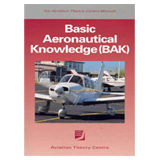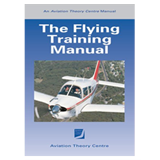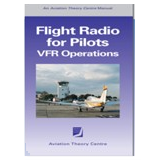[wp_eMember_compact_login]
Circuit Emergencies
By now you’ll probably be feeling a little more comfortable with circuit operations and hopefully conducting your checks, procedures and radio calls to a reasonable standard.
There is plenty more time in the circuit before Solo to continue practicing, but it’s time to start thinking about what we might do if the aircraft were to misbehave, so to speak.
Just as you’ve learned to recover from stalls to enhance your safety when flying, you’ll now learn how to:
– land an aircraft after an engine failure
– troubleshoot an engine problem in flight
– land an aircraft without the use of flap
– abort a takeoff during the takeoff roll
…and more
Lesson Techniques
As a RPL licence holder, you’ll need the skills to be able to safely land your aircraft in the unlikely event of an emergency in the circuit.
Below is a ‘Circuit Emergencies’ Handout that summarises the techniques and procedures that are found in your aircraft’s Pilot Operating Handbook (POH). It’s important to remember that the information offered in the handout is generalised, and not always aircraft-specific.
You should also look at the aircraft-specific procedures for your aircraft by downloading and reviewing the POH.
Hint: Look in POH section 3 if you fly a Cessna.
Part of good airmanship is not only correctly dealing with an issue once it has occurred, but also preparing mentally before such an event to ensure quick actions are taken when time is critical.
You should download, print and read the provided Pre Take-off Considerations document. Before we commence a take-off, we should have considered the actions we’ll take in the event of an engine failure. The TOSB refreshes our memory and hopefully allows us to act more quickly if such an event occurs. You should talk through the TOSB while taxiing the to the holding point.
Int the resources section below you will find a really interesting article about actual engine failure after takeoff events in Australia, and the outcomes achieved based on Pilot actions. Estimated article read time: 5-20 minutes.
Resources
Readings
Before attending your Briefing and Lesson, you should have read the following:
The Flying Training Manual – Chapter 13
Basic Aeronautical Knowledge (BAK) – continue reading through
Flight Radio for Pilots – continue reading through



Useful Links & Files
Circuit Emergencies
Download 370.60 KBSample Take Off Safety Brief
Download 550.93 KBManaging Engine Failure After Takeoff
Download 1.43 MBInstructor’s Tips
- Recalling emergency procedures from memory is an absolute must, as every second counts and efficient application of emergency procedures can mean the difference between success and failure
- You should consider sitting your first multi-choice exam if you haven’t already done so
- The take-off safety brief should be learned and used on every flight from now on
- Emergencies practice will do wonders for your confidence and aircraft handling abilities – normal circuits won’t seem so tough anymore 🙂
Questions
This section gives you an opportunity to search for information, which is a skill that will come in handy during your training. Use resources such as your text books or the Internet to answer the following questions.
- What are the ‘initial actions’ in the event of an engine failure in the circuit?
- What is a take-off safety brief? Can you recall it from memory?
- During an engine failure immediately after take-off, why isn’t is recommended to turn back to the runway?
- What is the best glide speed for your aircraft? What will happen to glide range if you fly faster than that speed?
- What will happen to glide range if you fly slower than the best glide speed?
Learning Objectives
To be assessed as competent to conduct and recover from simulated Circuit emergencies, you should be able to:
- Recall your aircraft’s emergency procedures from memory
- Safely control the aircraft during a simulated emergency
- Set and trim for the best glide speed and choose an appropriate simulated landing location quickly
